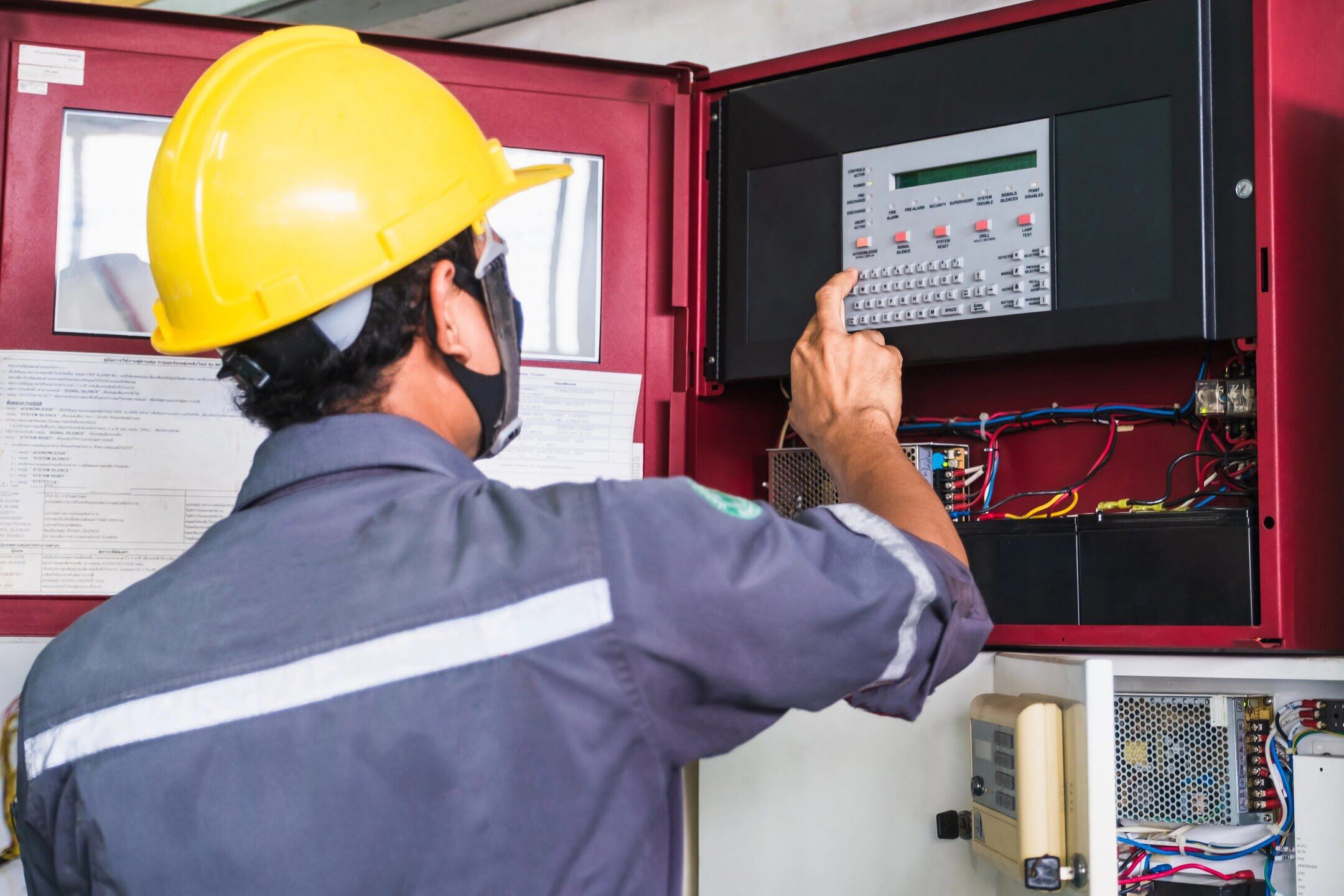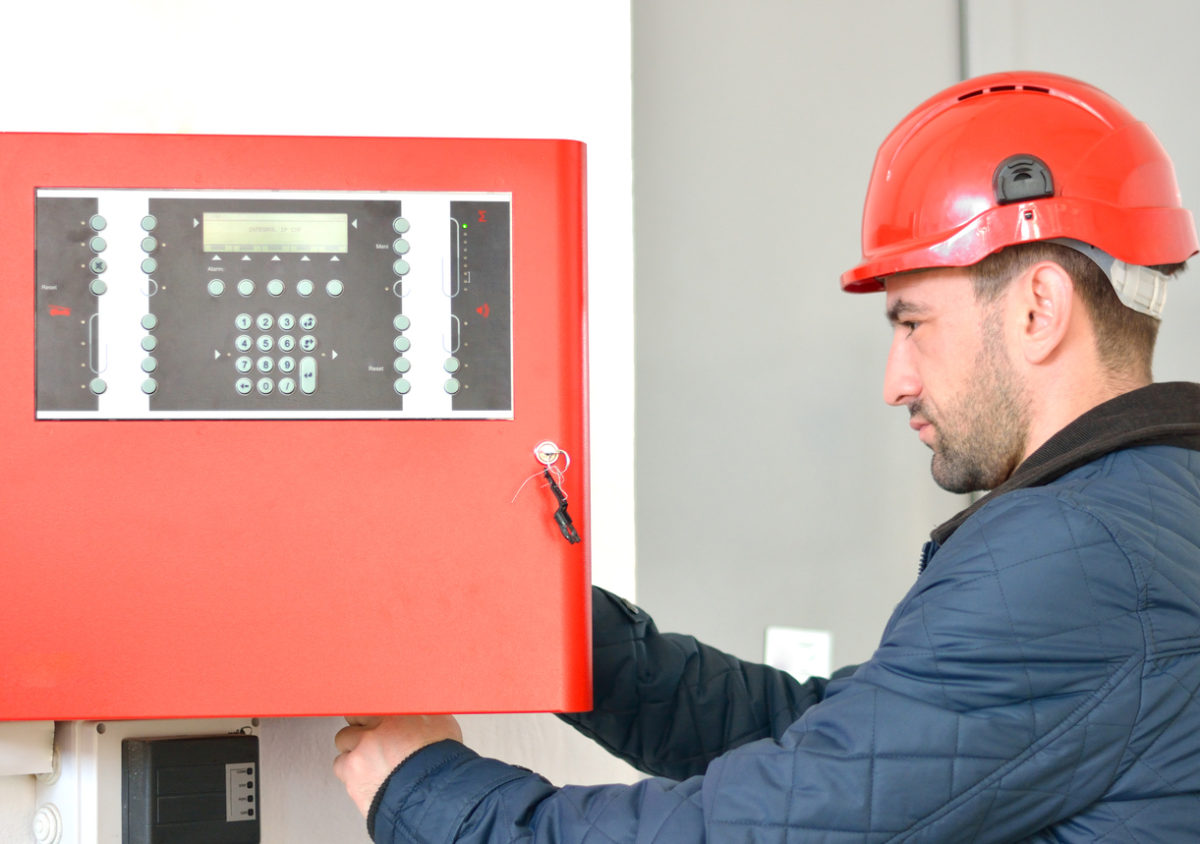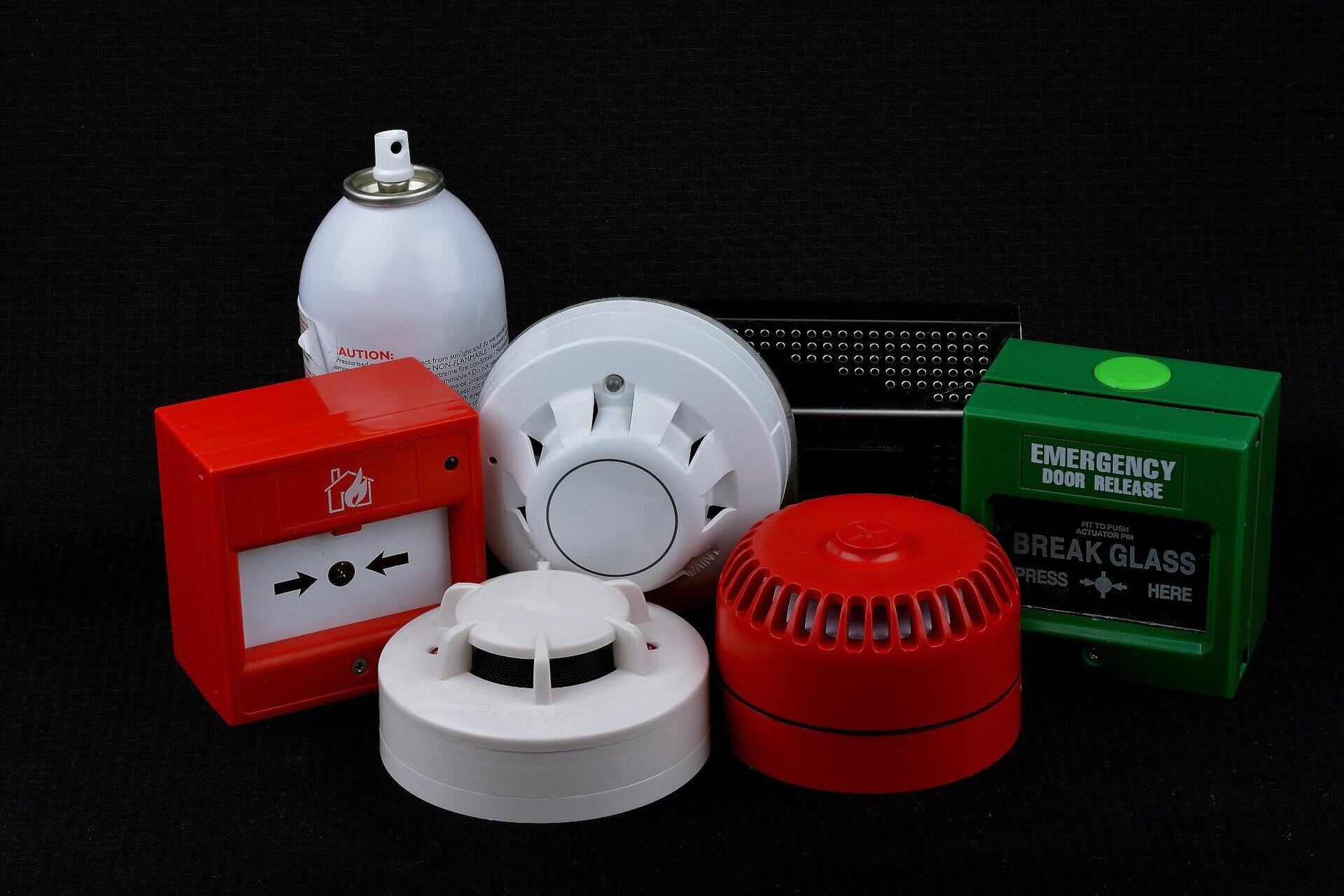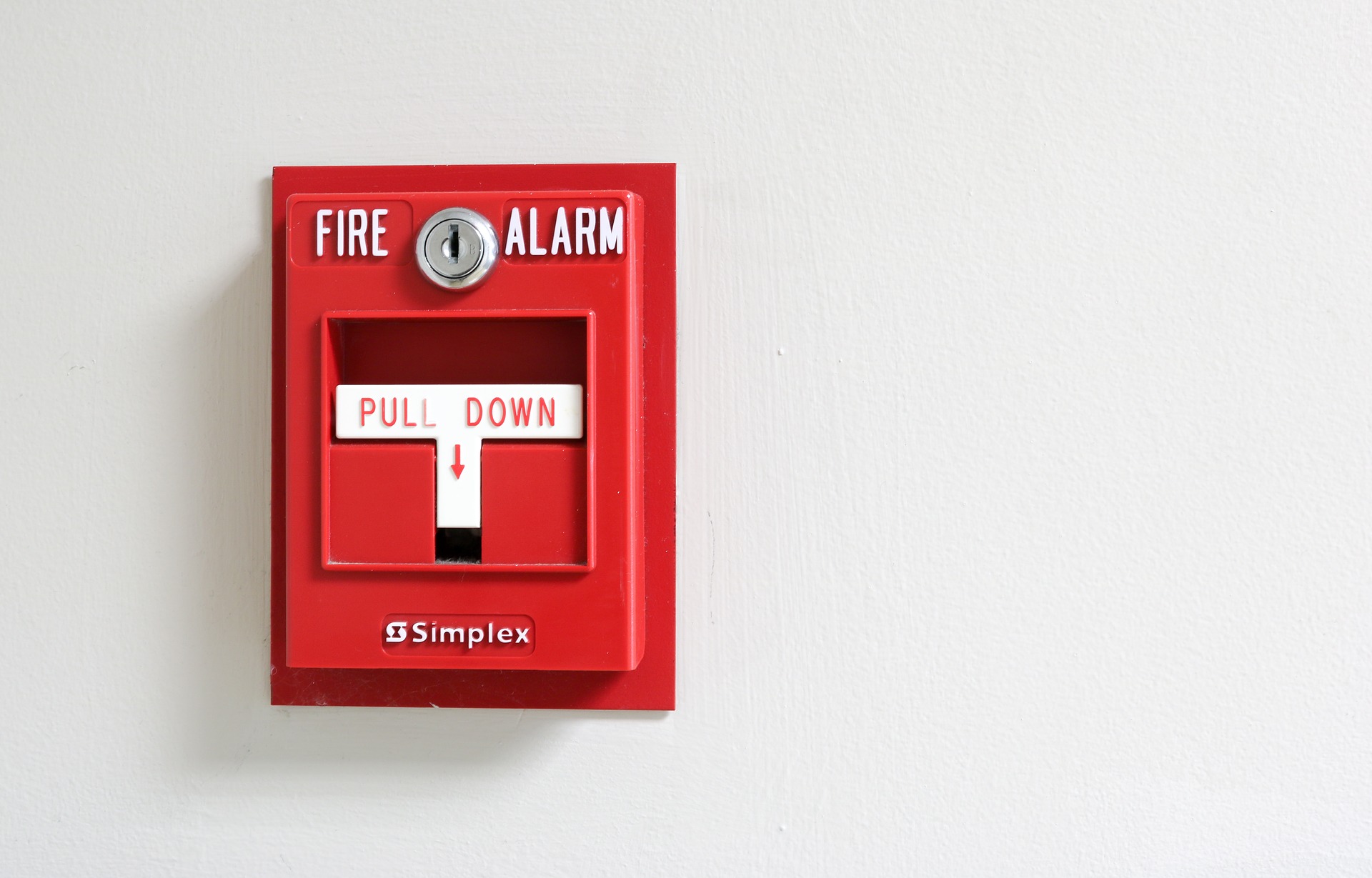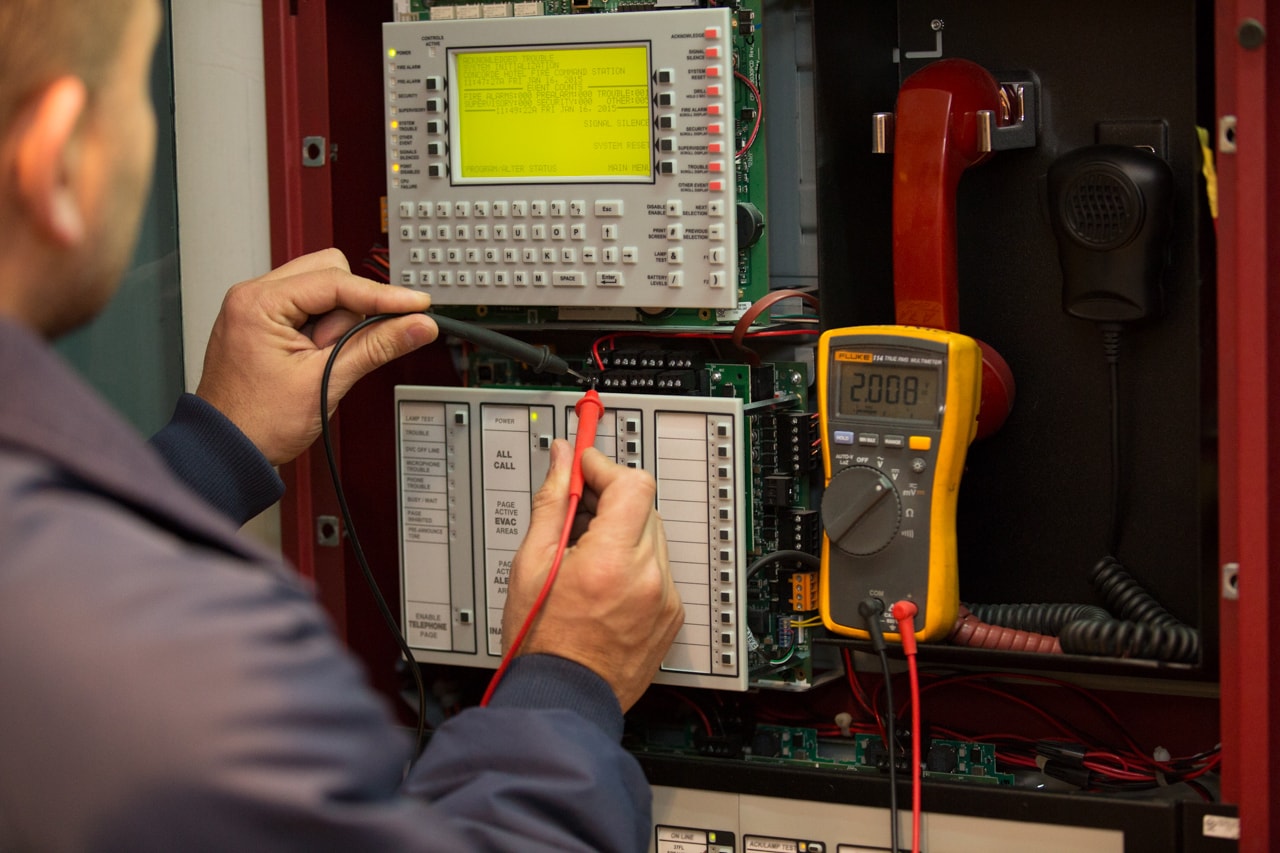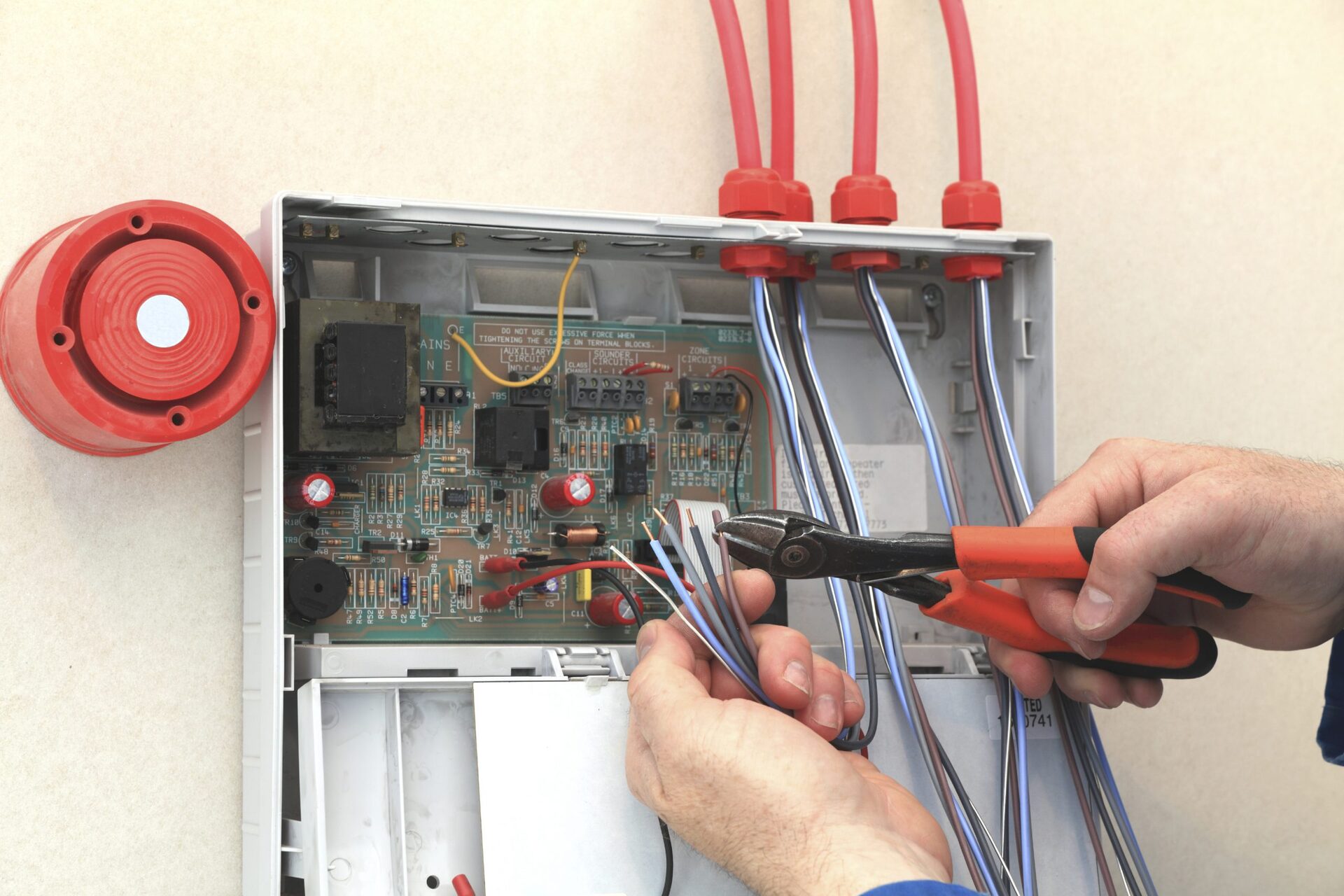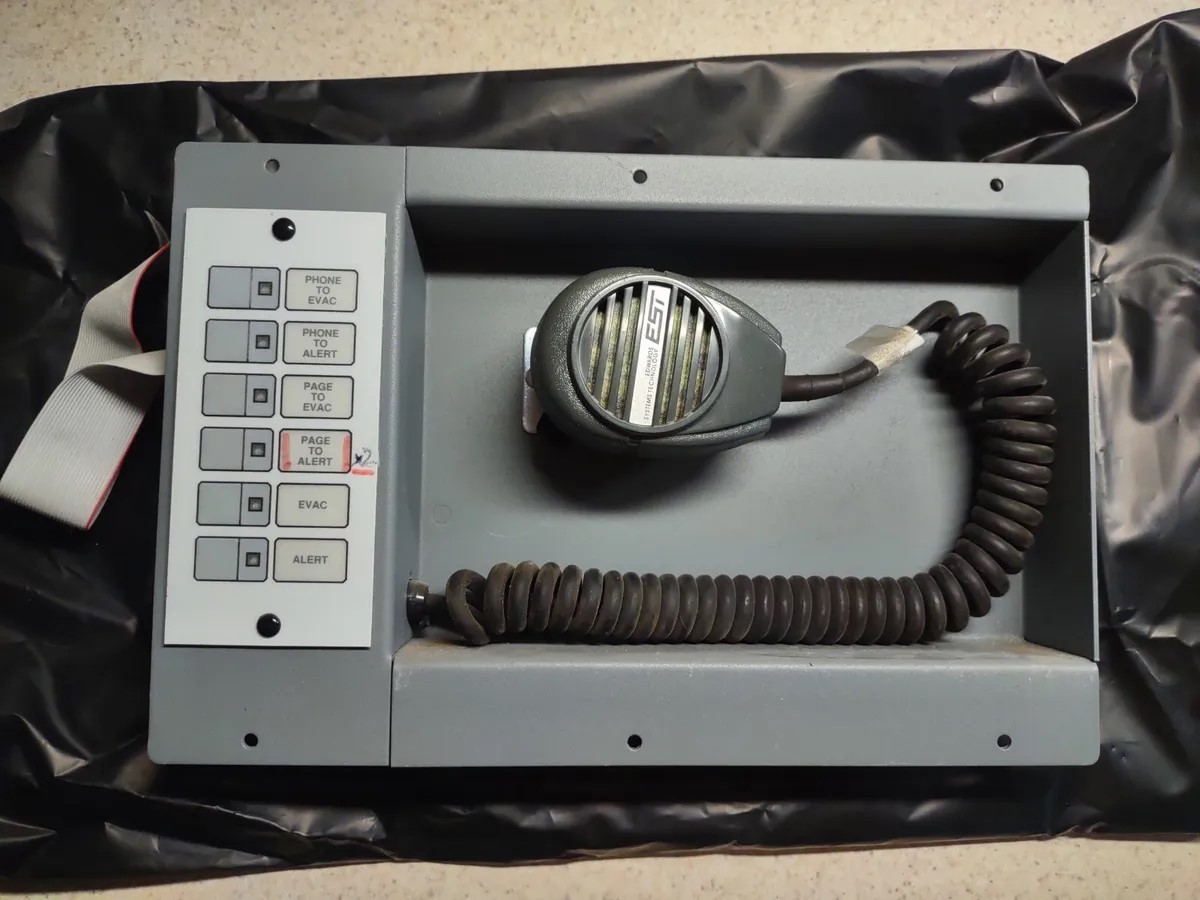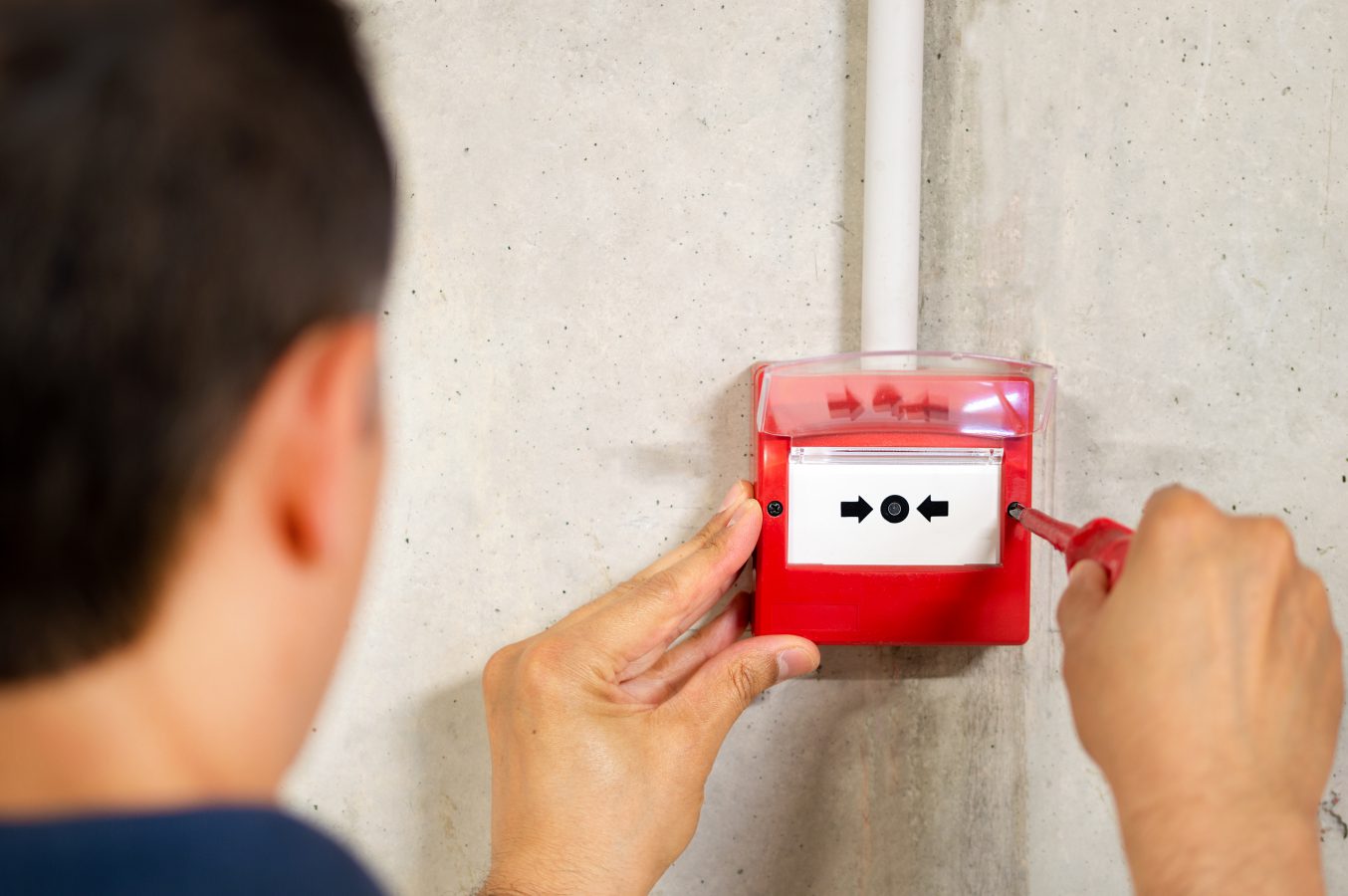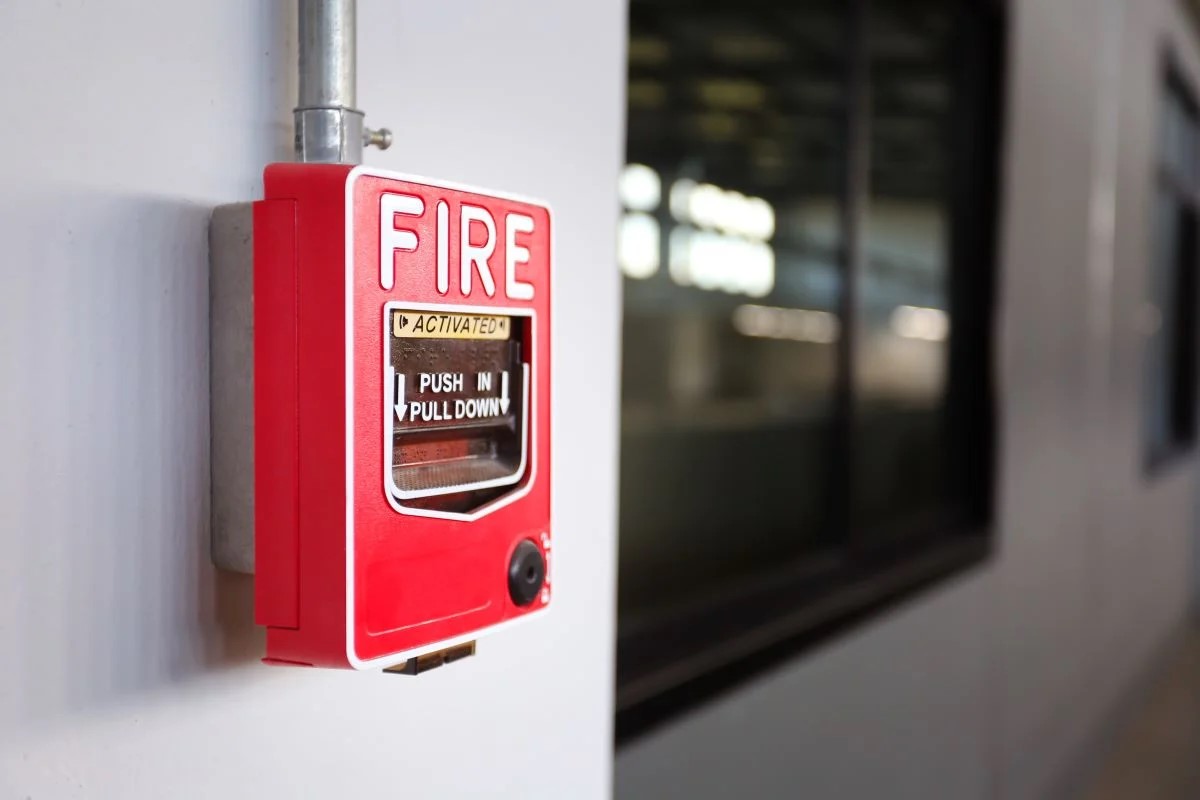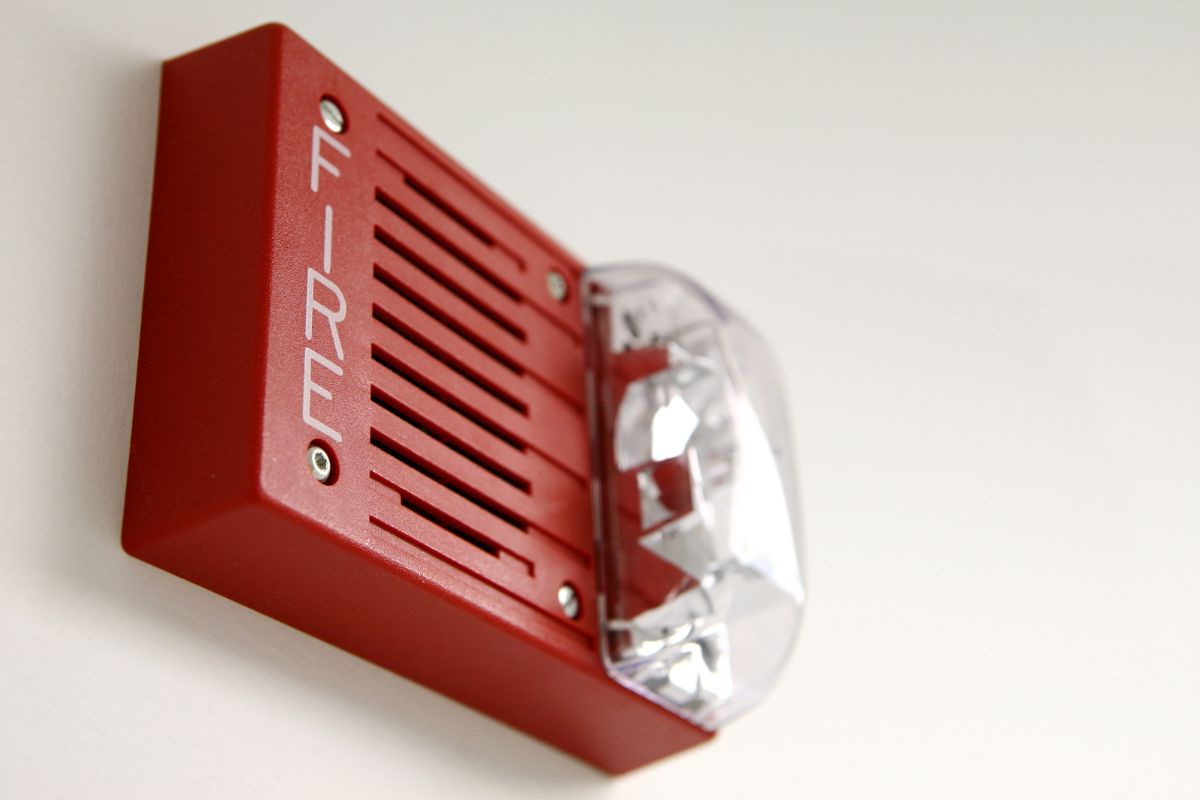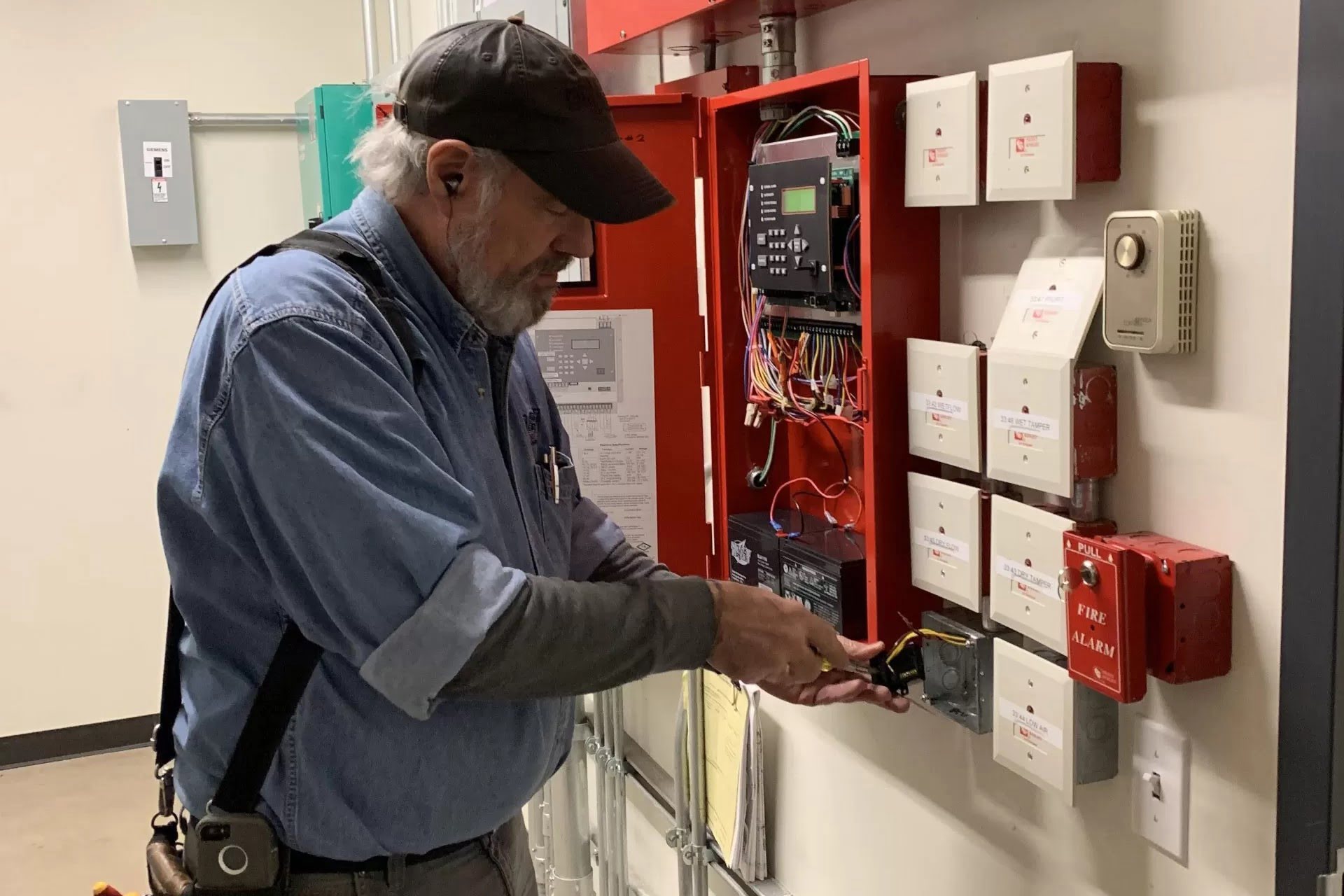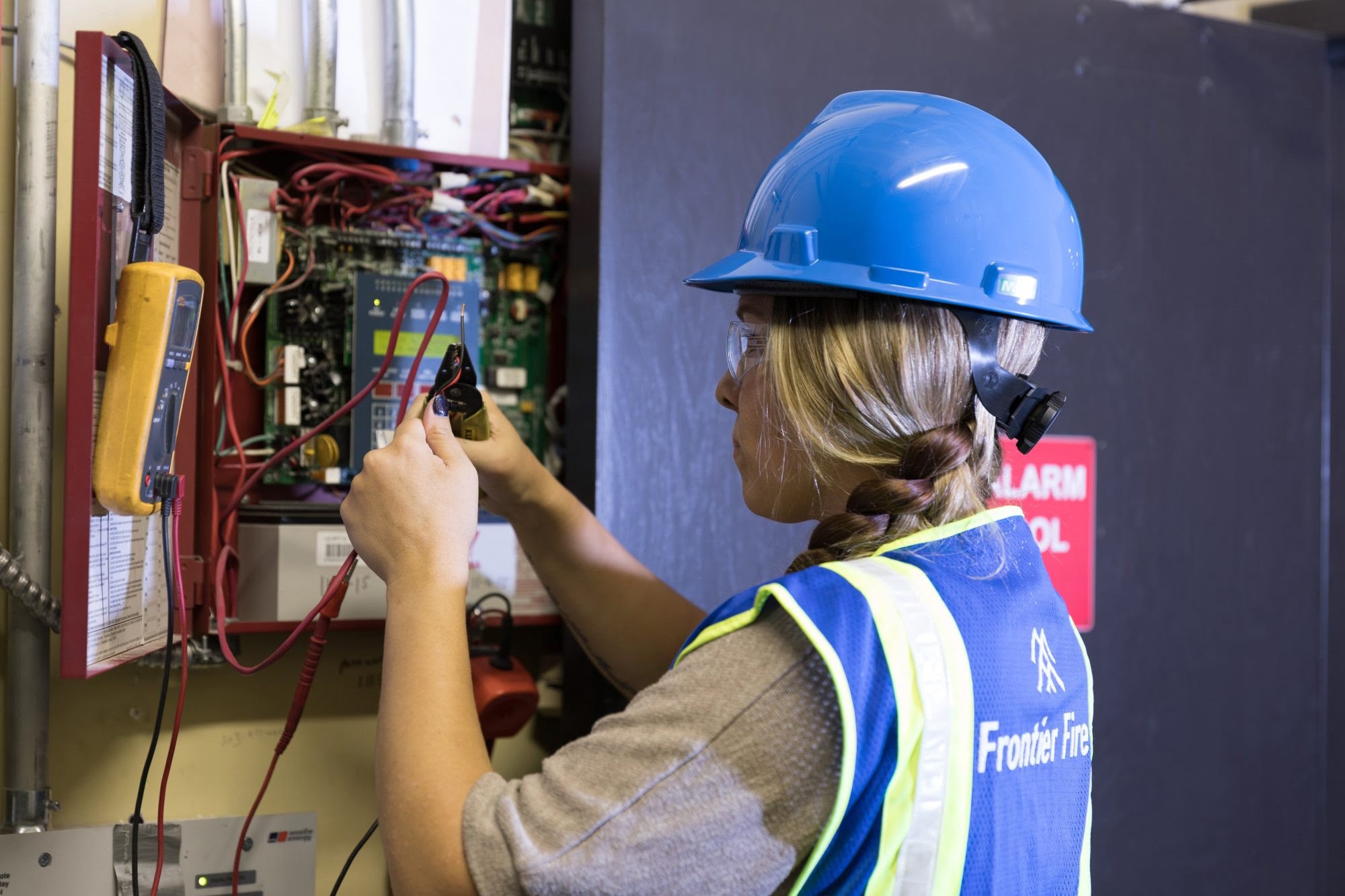Home>Home Security and Surveillance>What Are The Basic Components Of Fire Detection And Alarm Systems?
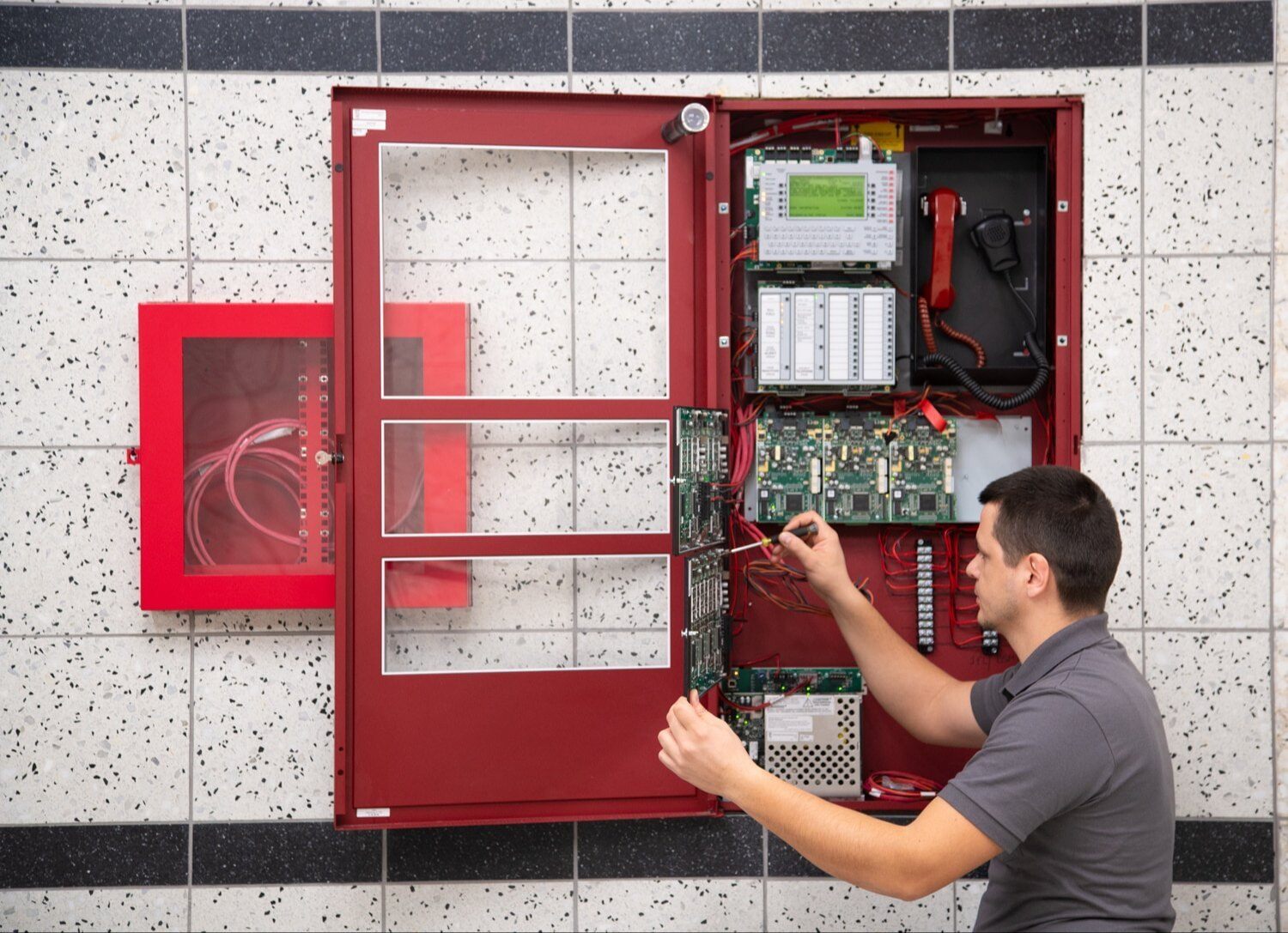

Home Security and Surveillance
What Are The Basic Components Of Fire Detection And Alarm Systems?
Modified: March 6, 2024
Learn about the essential components of fire detection and alarm systems for comprehensive home security and surveillance.
(Many of the links in this article redirect to a specific reviewed product. Your purchase of these products through affiliate links helps to generate commission for Storables.com, at no extra cost. Learn more)
Introduction
Welcome to the world of fire detection and alarm systems! Whether you’re a homeowner looking to protect your property or a business owner concerned about the safety of your employees and assets, understanding the basics of fire detection and alarm systems is crucial.
Fire is a devastating force that can cause immense damage, injury, and even loss of life. Therefore, it is essential to have an effective fire detection and alarm system in place to quickly identify and notify occupants of a potential fire, allowing for a swift and safe evacuation or containment.
In this article, we will explore the different types of fire detection and alarm systems and dive into the basic components that make up these systems. By the end, you’ll have a solid understanding of the key elements involved in protecting your home or business from the threat of fire.
So let’s jump right in and explore the world of fire detection and alarm systems!
Key Takeaways:
- Fire detection and alarm systems are crucial for protecting lives and property. Understanding the different types and components, along with regular maintenance, ensures effective fire safety for homes and businesses.
- Components like smoke detectors, heat detectors, and manual fire alarm stations play vital roles in early fire detection. Integrating monitoring systems enhances overall fire safety, providing peace of mind and swift emergency response.
Types of Fire Detection and Alarm Systems
Fire detection and alarm systems are designed to detect the presence of fire and initiate appropriate actions to mitigate the threat. There are several types of fire detection and alarm systems available, each tailored to specific environments and needs. Let’s take a closer look at some of these systems:
- Conventional Fire Alarm Systems: Conventional fire alarm systems are widely used in residential and small commercial buildings. They consist of a central control panel connected to multiple zones. When a fire is detected, the control panel identifies the specific zone where the fire is occurring, providing general information about the location but not precise details.
- Addressable Fire Alarm Systems: Addressable fire alarm systems are more advanced than conventional systems and are commonly found in larger commercial and industrial buildings. Each detector and device in the system has a unique address, allowing the control panel to identify the exact location of a fire. This provides more specific information, enabling prompt action and reducing false alarms.
- Wireless Fire Alarm Systems: Wireless fire alarm systems utilize wireless technology to communicate between the detectors, devices, and the control panel. This eliminates the need for extensive wiring, making them an ideal choice for retrofitting existing structures or installations where wiring is impractical or costly. Wireless systems offer flexibility and ease of installation without compromising performance.
- Aspirating Smoke Detection Systems: Aspirating smoke detection systems are highly sensitive and capable of detecting smoke at the earliest stages. They work by sampling the air through a network of pipes or sampling points, which are then analyzed by a central unit. This type of system is often used in critical environments, such as data centers, museums, and medical facilities, where early detection is crucial.
- Flame Detection Systems: Flame detection systems detect the presence of flames or radiant energy produced by a fire. These systems use specialized sensors to identify flames based on their unique signatures, such as ultraviolet (UV) or infrared (IR) light. Flame detection systems are commonly used in high-risk areas where fires can rapidly escalate, such as chemical plants, refineries, and power generation facilities.
Choosing the right type of fire detection and alarm system depends on various factors, including the size and layout of the building, the level of sensitivity required, and the specific hazards present. Consulting with a professional fire safety provider can help determine the most suitable system for your needs.
Basic Components of Fire Detection and Alarm Systems
A fire detection and alarm system is made up of several key components working together to ensure the early detection of fire and the prompt notification of occupants. Let’s explore the basic components that make up these systems:
- Fire Alarm Control Panel (FACP): The Fire Alarm Control Panel serves as the brain of the fire detection and alarm system. It receives signals from various detectors and devices and monitors the overall system. In the event of a fire, it activates the notification devices and may also communicate with external monitoring systems.
- Smoke Detectors: Smoke detectors are one of the most crucial components of a fire detection and alarm system. They work by sensing the presence of smoke particles in the air. When smoke is detected, the detector sends a signal to the control panel, triggering the alarm and alerting the occupants of a potential fire.
- Heat Detectors: Heat detectors are designed to detect rapid changes in temperature or excessive heat. They are commonly used in areas where the presence of smoke or flames might not be expected, such as kitchens or garages. Heat detectors are an important complement to smoke detectors and provide an additional layer of fire detection.
- Flame Detectors: Flame detectors are specialized sensors that detect the presence of flames by analyzing the unique characteristics of the light emitted by a fire. They are particularly useful in areas where early detection of fire is critical, such as facilities handling flammable materials or high-risk environments.
- Manual Fire Alarm Stations: Manual fire alarm stations are located at strategic points throughout a building and allow individuals to manually trigger the fire alarm system when they spot a fire or suspect a fire emergency. These stations consist of pull stations or push buttons that, when activated, send a signal to the control panel, initiating the alarm sequence.
- Notification Devices: Notification devices are responsible for alerting occupants of a potential fire. These devices include strobe lights, sirens, horns, and speakers that emit audible and visible alarms. The notification devices are strategically placed throughout the building to ensure that occupants can quickly and easily receive the alerts even in noisy or visually impaired situations.
- Monitoring System: A monitoring system complements the fire detection and alarm system by providing off-site monitoring and alerting capabilities. This system can notify a central monitoring station or emergency services when a fire is detected, ensuring that emergency personnel can respond promptly.
By integrating these components into a comprehensive fire detection and alarm system, you can enhance the safety of your home or business and mitigate the risks posed by fire.
Remember, regular inspection, testing, and maintenance of the fire detection and alarm system are essential to ensure its continued effectiveness. Consulting with a professional fire safety provider can assist you in designing, installing, and maintaining an optimal fire detection and alarm system for your specific needs.
Fire Alarm Control Panel (FACP)
The Fire Alarm Control Panel (FACP) is the central component of a fire detection and alarm system. It serves as the command center, receiving information from various detectors and devices and monitoring the overall system. The FACP plays a crucial role in ensuring the timely and accurate notification of a potential fire.
The main functions of the FACP include:
- Monitoring and Control: The FACP continuously monitors the status of various detectors and devices in the system. It receives signals and information from smoke detectors, heat detectors, flame detectors, and manual fire alarm stations. In the event of a fire or other system abnormalities, the FACP initiates appropriate actions.
- Alarm Activation: When a detector or manual fire alarm station is activated, the FACP triggers the alarm sequence. It activates the notification devices, such as sirens, strobe lights, horns, or speakers, to alert occupants of a potential fire and prompt them to evacuate or take necessary precautions.
- Event Logging: The FACP records and logs all events and alarms that occur within the system. This information can be essential for identifying the cause of a fire, determining the response time, and conducting post-incident analysis. Event logging provides valuable data that can aid in investigations and system performance evaluation.
- Communication and Integration: The FACP can be integrated with other building systems, such as HVAC (Heating, Ventilation, and Air Conditioning), access control, or sprinkler systems. This integration allows for coordinated responses during an emergency, such as shutting down air-handling units or unlocking doors for evacuation purposes. The FACP can also communicate with external monitoring systems or fire departments, alerting them to the fire incident.
- Maintenance and Diagnostics: The FACP includes features that facilitate regular maintenance and diagnostic testing of the fire detection and alarm system. It provides detailed information about the status of each detector and device, indicating any faults or malfunctions. This aids in identifying and resolving issues promptly, ensuring the system’s continued reliability.
The Fire Alarm Control Panel is typically located in a secure and easily accessible area, such as a control room or building management center. It should be installed by trained professionals and comply with relevant fire safety codes and standards.
It is crucial to ensure that the FACP is regularly inspected, tested, and maintained to ensure its proper operation. This includes checking the power supply, testing the communication pathways, verifying the functionality of connected devices, and conducting periodic software updates if applicable.
By having a reliable and well-maintained Fire Alarm Control Panel, you can effectively monitor and control your fire detection and alarm system, enhancing the safety of your premises and minimizing the risks posed by fire.
Smoke Detectors
Smoke detectors are a critical component of any fire detection and alarm system. They are designed to detect the presence of smoke particles in the air, providing early warning of a potential fire. Smoke detectors are widely used in residential, commercial, and industrial buildings to ensure the safety of occupants and minimize property damage.
Here are some key points about smoke detectors:
- Types of Smoke Detectors: There are primarily two types of smoke detectors: ionization and photoelectric. Ionization smoke detectors use a small amount of radioactive material to ionize the air in the detection chamber. When smoke enters the chamber, it disrupts the electrical current, triggering the alarm. Photoelectric smoke detectors use a light source and a light-sensitive sensor. When smoke enters the detection chamber, it scatters the light, triggering the alarm. Both types have their advantages and are suitable for different fire scenarios.
- Installation Locations: Smoke detectors should be strategically installed throughout a building to ensure maximum coverage. They are typically placed near bedrooms, in hallways, and on each level of the building. It is important to follow local fire safety codes and manufacturer’s guidelines for proper placement and spacing of smoke detectors.
- Maintenance and Testing: Regular maintenance and testing are crucial to ensure the proper functioning of smoke detectors. This includes periodic cleaning of the detectors to prevent dust or debris buildup, testing the alarm sound, and verifying the responsiveness of the detector by using smoke test aerosols. It is recommended to test smoke detectors at least once a month and replace batteries as necessary.
- Interconnection: Interconnecting smoke detectors can significantly enhance early warning capabilities. When one smoke detector detects smoke, it triggers all interconnected smoke detectors in the system, sounding an alarm throughout the building. This helps to ensure that occupants in different parts of the building are alerted promptly, enabling them to evacuate quickly.
- Integration with Fire Alarm Control Panel: Smoke detectors are typically connected to the Fire Alarm Control Panel (FACP) in a fire detection and alarm system. When a smoke detector is activated, it sends a signal to the FACP, which initiates the alarm sequence and notifies the control room or monitoring station. This integration allows for centralized monitoring and control of the smoke detectors.
- Enhanced Features: Advanced smoke detectors may include additional features, such as remote monitoring capabilities, self-diagnostic testing, and remote silence functions. These features can improve system reliability and simplify maintenance activities.
Smoke detectors are a vital early warning system that can save lives and protect property. It is essential to install and maintain smoke detectors in accordance with relevant fire safety codes and manufacturer’s recommendations. Regular inspection, cleaning, and testing of smoke detectors can ensure their proper operation and increase the overall effectiveness of your fire detection and alarm system.
Remember, smoke detectors are not a substitute for fire safety practices. Implementing proper fire prevention measures, conducting evacuation drills, and having appropriate fire extinguishing equipment are also essential for comprehensive fire safety.
Heat Detectors
Heat detectors are an essential component of fire detection and alarm systems. They are designed to detect rapid changes in temperature or excessive heat, providing an additional layer of protection in environments where the presence of smoke or flames may not be expected.
Here are some key points about heat detectors:
- Types of Heat Detectors: There are two main types of heat detectors: fixed temperature and rate-of-rise. Fixed temperature heat detectors are designed to activate when the ambient temperature reaches a specific pre-set level. Once the threshold is exceeded, the heat detector triggers the alarm. Rate-of-rise heat detectors, on the other hand, are designed to detect rapid changes in temperature. If the temperature rises above a certain rate within a specific period, the heat detector signals an alarm.
- Installation Locations: Heat detectors are typically installed in areas where the presence of smoke or flames can trigger false alarms or where smoke detection may not be suitable. Common locations include kitchens, garages, boiler rooms, and areas with high levels of dust, fumes, or humidity. Heat detectors should be placed according to local fire safety codes and manufacturer’s guidelines.
- Maintenance and Testing: Regular maintenance and testing are crucial to ensure the proper functioning of heat detectors. This includes checking for any signs of damage or obstruction, ensuring that the detector’s sensitivity is set correctly, and testing the alarm sound. Heat detectors should be tested at regular intervals to ensure their reliability.
- Combination Detectors: Combination detectors, also known as multi-sensor detectors, combine the capabilities of smoke and heat detection in a single device. These detectors use both smoke and heat sensors to provide a more comprehensive and reliable fire detection solution. Combination detectors are especially useful in areas with challenging environments or varying fire risks.
- Integration with Fire Alarm Control Panel: Heat detectors are typically connected to a Fire Alarm Control Panel (FACP) as part of a fire detection and alarm system. When a heat detector is triggered, it sends a signal to the FACP, which activates the alarm and notifies the control room or monitoring station. Integration with the FACP allows for centralized monitoring and control of the heat detectors.
- Limitations: It’s important to note that heat detectors are designed to respond to increases in temperature and are not as sensitive to slow-developing fires or smoldering combustibles as smoke detectors. Therefore, heat detectors are most effective in areas where fast-spreading fires are more likely or where smoky or dusty conditions are present.
Heat detectors provide an additional layer of fire detection, complementing smoke detectors and enhancing the overall effectiveness of a fire detection and alarm system. By strategically placing heat detectors in appropriate locations throughout a building, you can ensure a comprehensive fire safety solution.
As with all fire detection and alarm system components, regular inspection, testing, and maintenance of heat detectors are essential to ensure their proper operation. Following manufacturer’s recommendations and relevant fire safety codes will help keep the system functioning optimally and provide the necessary protection against fire hazards.
Regular maintenance and testing of fire detection and alarm systems is crucial to ensure they are functioning properly. This includes checking sensors, batteries, and control panels to ensure they are in good working condition.
Flame Detectors
Flame detectors play a crucial role in fire detection and alarm systems, specifically in environments where early detection of a fire is critical. These specialized sensors are designed to detect the presence of flames by analyzing the unique characteristics of the light emitted by a fire.
Here are some key points about flame detectors:
- Types of Flame Detectors: There are different types of flame detectors, including ultraviolet (UV) flame detectors and infrared (IR) flame detectors. UV flame detectors detect the ultraviolet light generated by flames, while IR flame detectors detect the infrared radiation emitted by flames. Each type has its advantages and limitations, and the choice depends on the specific application and environment.
- Working Principle: Flame detectors analyze the light spectrum emitted by a fire. They are designed to detect the unique patterns and frequencies of light produced by flames, distinguishing them from other sources of light or heat in the environment. When a flame is detected, the detector sends a signal to the Fire Alarm Control Panel (FACP) to initiate the alarm sequence.
- Applications: Flame detectors are commonly used in high-risk environments and industries where fires can escalate rapidly. These may include chemical plants, refineries, power generation facilities, and storage areas for flammable materials. Flame detectors are also used in areas where smoke detection may not be effective or viable, such as outdoor spaces or open-air environments.
- Sensitivity and False Alarms: Flame detectors can be adjusted for sensitivity to minimize false alarms. However, external factors such as sunlight, other sources of light, or heat-emitting equipment can sometimes trigger false alarms. Regular maintenance and testing can help ensure that flame detectors are working optimally and not susceptible to false alarms.
- Integration with FACP: Flame detectors are typically connected to the Fire Alarm Control Panel (FACP), allowing for centralized monitoring and control. When a flame is detected, the FACP receives the signal from the flame detector and initiates the alarm sequence, alerting occupants and relevant authorities.
- Limitations: It’s important to note that flame detectors are designed to detect the presence of flames and are not meant to replace smoke detectors. They are most effective in detecting open flames and may not be as sensitive to smoldering fires or fires with minimal visible flames. It is recommended to use flame detectors in conjunction with other fire detection devices to enhance overall fire safety.
Flame detectors provide a valuable layer of fire detection in high-risk environments where rapid flame detection is crucial. By installing flame detectors in strategic locations, you can enhance the early warning capabilities of your fire detection and alarm system, allowing for timely intervention and minimizing the potential impact of a fire.
As with all components of a fire detection and alarm system, regular maintenance and testing are essential to ensure the proper functioning of flame detectors. Following manufacturer’s recommendations and adhering to relevant fire safety codes will help ensure optimal performance and reliable fire detection.
Manual Fire Alarm Stations
Manual fire alarm stations, also known as pull stations or call points, are an important component of fire detection and alarm systems. These stations allow individuals to manually trigger the fire alarm system when they identify a fire or suspect a fire emergency. Manual fire alarm stations provide a quick and accessible way for occupants to activate the alarm and initiate the necessary emergency response.
Here are some key points about manual fire alarm stations:
- Location: Manual fire alarm stations should be strategically placed throughout a building in visible and easily accessible locations. They should be installed near exits, corridors, or other high-traffic areas to ensure that individuals can quickly locate and activate them during an emergency. Local fire safety codes and regulations specify the appropriate spacing and placement of manual fire alarm stations.
- Activation: Manual fire alarm stations are designed to be easily activated by simply pulling down on the handle or lever. When the handle is pulled, it activates a switch mechanism that sends a signal to the Fire Alarm Control Panel (FACP), triggering the alarm sequence.
- Redundancy: Manual fire alarm stations provide redundancy in fire detection. While automated detection systems, such as smoke or heat detectors, are designed to automatically trigger alarms, manual fire alarm stations allow occupants to immediately activate the alarm system when they directly observe a fire or emergency situation.
- Emergency Communication: In addition to activating the fire alarm, manual fire alarm stations can serve as communication points during emergencies. If equipped with an intercom system or a two-way communication system, individuals can relay information about the fire or emergency to the control room or emergency personnel.
- Testing and Maintenance: Regular testing and maintenance of manual fire alarm stations are essential to ensure their proper operation. The stations should be inspected for damage or tampering, and the response of the alarm system upon activation should be verified. It is important to follow the manufacturer’s recommendations and local fire safety codes for testing and maintenance procedures.
- Educating Occupants: It is crucial to educate occupants about the purpose and proper use of manual fire alarm stations. Regular fire safety training should include instructions on when and how to activate the alarm stations and emphasize the importance of reporting any fire emergencies immediately.
Manual fire alarm stations provide a means for occupants to take immediate action and notify others of a fire emergency. They are an integral part of a comprehensive fire detection and alarm system, working in conjunction with automated detection devices to ensure the timely and effective response to a fire.
Regular inspection, testing, and maintenance of manual fire alarm stations are necessary to ensure their reliability. A well-maintained and properly functioning fire alarm system, including manual fire alarm stations, can make a significant difference in ensuring the safety of occupants and minimizing the potential damage caused by a fire.
Notification Devices
Notification devices are a crucial component of fire detection and alarm systems. They are responsible for alerting occupants of a potential fire, ensuring that people can quickly evacuate or take necessary precautions. These devices use audible and visible signals to provide clear and unmistakable alerts in emergency situations.
Here are some key points about notification devices:
- Types of Notification Devices: Notification devices include various audible and visible alarm signals. Audible devices may include sirens, horns, bells, or speakers that emit high-volume sound alerts. Visible devices may include strobe lights or flashing lights that provide visual alerts, especially beneficial for individuals with hearing impairments or in noisy environments.
- Placement of Notification Devices: Notification devices should be strategically placed throughout a building to ensure maximum coverage and visibility. They should be installed in areas where they can be easily seen and heard, ensuring that occupants are alerted to the potential danger of a fire. Local fire codes and regulations specify the appropriate placement and spacing of notification devices.
- Alarm Tone and Patterns: The sound produced by audible notification devices should be distinct and easily recognizable. Fire alarm systems often incorporate temporal patterns, such as the three-pulse pattern (e.g., beep-beep-beep-pause-beep-beep-beep-pause), as per National Fire Alarm and Signaling Code (NFPA 72) guidelines. These standardized patterns help avoid confusion and ensure that occupants recognize the alarm sound as an indication of a fire emergency.
- Integration with Fire Alarm Control Panel: Notification devices are connected to the Fire Alarm Control Panel (FACP) in a fire detection and alarm system. When the FACP receives a signal of a potential fire, it activates the notification devices, audible and visible alarm signals, throughout the building. This integration ensures synchronized alerting and a coordinated response to a fire incident.
- Emergency Voice Communication: Some notification devices may include speakers that allow for emergency voice communication. This feature enables emergency personnel or designated individuals to broadcast important instructions or evacuation announcements during a fire emergency, providing clear and specific guidance to occupants.
- Backup Power: Notification devices, like other components of a fire alarm system, should be equipped with backup power sources, such as batteries or generators. This ensures that the devices continue to function in the event of a power outage, allowing for uninterrupted alerting capabilities during emergency situations.
Notification devices play a critical role in quickly and effectively alerting occupants to the presence of a potentially dangerous situation. The combination of audible and visible signals helps ensure that people with varying abilities or in different areas of a building can receive the alarm notification and respond accordingly.
Regular inspection, testing, and maintenance of notification devices are crucial to ensure their proper operation. Checks should include verifying the audibility and visibility of the devices, ensuring that they are free from obstructions and in working order. Following manufacturer’s instructions and relevant fire safety codes will help maintain the reliability and effectiveness of the notification devices in your fire detection and alarm system.
Read more: What Document Sets The Standards For The Design And Installation Of Fire Detection And Alarm Systems
Monitoring System
A monitoring system is an integral part of a comprehensive fire detection and alarm system. It provides enhanced functionality by enabling off-site monitoring and remote alerting capabilities. With a monitoring system in place, potential fire incidents can be detected and responded to promptly, ensuring a swift and effective emergency response.
Here are key points about monitoring systems:
- Centralized Monitoring: A monitoring system allows for centralized monitoring of the fire detection and alarm system. It typically consists of a control room or monitoring station where trained personnel can continuously monitor the status of the system, receive alarm notifications, and coordinate emergency response efforts.
- Remote Alerting: In addition to on-site alerting devices, a monitoring system provides the capability to remotely alert emergency personnel or relevant authorities when a fire is detected. This may involve automatically notifying the local fire department or emergency services, enabling them to respond quickly to the incident.
- 24/7 Monitoring: Monitoring systems can provide round-the-clock monitoring, ensuring constant surveillance and immediate response capabilities. This is especially beneficial for large commercial or industrial facilities where fire hazards may be present at any time of day or night, even when the premises are unoccupied.
- Integration with Fire Alarm Control Panel: The monitoring system is integrated with the Fire Alarm Control Panel (FACP) to receive alarm signals and status updates from the fire detection and alarm system. This integration allows for real-time monitoring, including tracking the system’s performance, identifying any faults or malfunctions, and providing a comprehensive view of the situation.
- Event Reporting and Logging: A monitoring system enables detailed event reporting and logging, documenting the history of alarm activations and system activities. This information can be valuable for post-incident analysis, investigations, and compliance reporting purposes.
- Remote Diagnostics: Some monitoring systems offer remote diagnostics capabilities, allowing authorized personnel to perform system checks, conduct troubleshooting, and resolve issues remotely. This can help reduce response times and minimize the need for on-site visits, improving the overall efficiency of system maintenance.
- Backup Communication: To ensure reliable communication between the fire detection and alarm system and the monitoring station, monitoring systems often have backup communication pathways. This can include redundant communication lines, cellular networks, or internet-based connections, ensuring that critical alarm signals are transmitted even in the event of a communication failure.
A monitoring system provides an added layer of security and peace of mind by offering continuous surveillance and extended capabilities for fire detection and emergency response. By integrating a monitoring system into your fire detection and alarm system, you can enhance the effectiveness and reliability of your overall fire safety infrastructure.
Regular maintenance and testing of the monitoring system, as well as regular communication checks with the monitoring station, are essential for its proper operation. This will help ensure that alarm signals are reliably transmitted and acted upon, enhancing the overall efficiency of emergency response efforts.
Conclusion
Fire detection and alarm systems are critical components of any building’s safety infrastructure. They serve as the first line of defense against the devastating effects of fire, providing early detection and alerting occupants to potential dangers. Understanding the basic components of these systems is essential in ensuring the safety of individuals and the protection of property.
In this article, we explored the various types of fire detection and alarm systems, including conventional systems, addressable systems, wireless systems, aspirating smoke detection systems, and flame detection systems. Each type has its own advantages and is suitable for different types of environments and hazards.
We discussed the fundamental components that make up these systems, such as the Fire Alarm Control Panel (FACP), smoke detectors, heat detectors, flame detectors, manual fire alarm stations, notification devices, and monitoring systems. Each component plays a crucial role in detecting fires, alerting occupants, and coordinating the necessary response.
We also highlighted the importance of regular inspection, testing, and maintenance to ensure the proper functioning of the fire detection and alarm system. Compliance with local fire safety codes and manufacturer’s recommendations is imperative to maintain the reliability and effectiveness of these systems.
By having a well-designed and properly maintained fire detection and alarm system, you can greatly reduce the risks associated with fires, protect lives, and minimize property damage. The integration of advanced technologies, such as monitoring systems and combination detectors, further enhances the capabilities of these systems, enabling quicker response times and improved overall fire safety.
Remember, fire safety is a shared responsibility. In addition to having a robust fire detection and alarm system in place, it is important to implement fire prevention measures, conduct regular fire safety training, and have appropriate evacuation plans and fire-fighting equipment in case of emergencies.
With proper knowledge and a proactive approach to fire safety, you can create a secure environment for yourself, your family, employees, and visitors. Don’t underestimate the power of a well-designed fire detection and alarm system – it has the potential to save lives and protect what matters most.
Frequently Asked Questions about What Are The Basic Components Of Fire Detection And Alarm Systems?
Was this page helpful?
At Storables.com, we guarantee accurate and reliable information. Our content, validated by Expert Board Contributors, is crafted following stringent Editorial Policies. We're committed to providing you with well-researched, expert-backed insights for all your informational needs.
